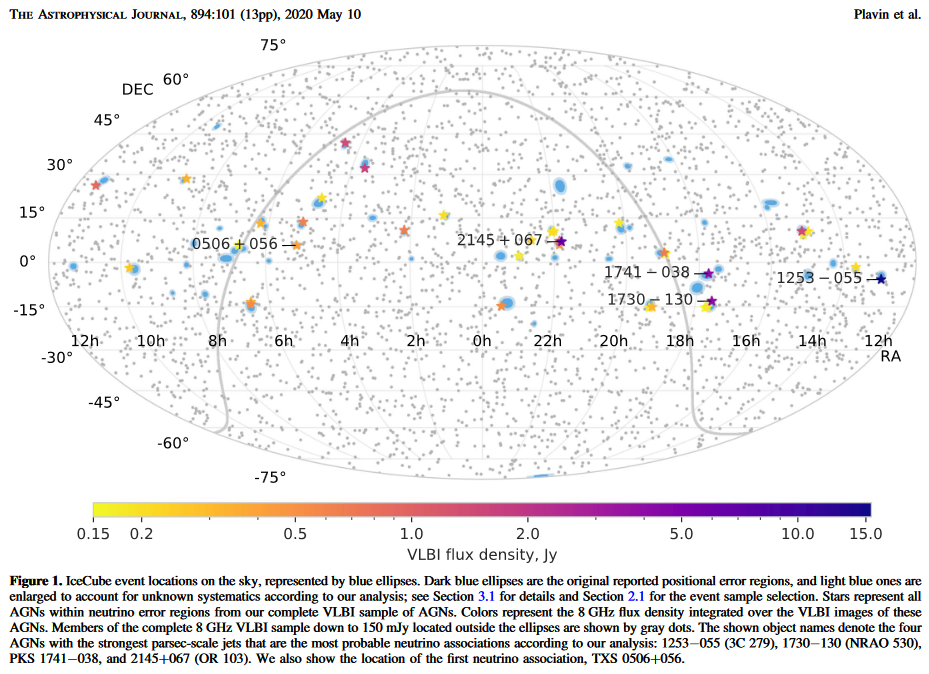Tau.Neutrino said:
High-energy cosmic neutrinos traced back to their home quasars
There are billions of tiny particles called neutrinos streaming through your body right now. But where did they come from? Russian researchers have now traced back some ultra-high energy neutrinos to their points of origin – radio flares from raging quasars.
more…
At last. Yippee.
> While these have been detected coming from quasars before …
I’d missed that.
> … it was thought that they always accompanied gamma ray bursts. The team on the new study suspected they might instead be produced during radio flares. To find out, the researchers analyzed 50 neutrino events picked up by IceCube, and compared the data to measurements of quasars from radio telescopes around the world. In particular, they used the Russian radio telescope RATAN.
> And sure enough, they discovered that at the same time as the neutrinos were hitting Earth, radio flares with frequencies of over 10 GHz were often recorded coming from certain quasars. At first the results seemed too good to be true, but after carefully reanalyzing the data, we confirmed that the neutrino events were clearly associated with the signals picked up by radio telescopes.
But why radio? Radio is at the low energy end of the electromagnetic spectrum, and these neutrinos are about as high energy as it’s possible to get. What is the physical mechanism that connects the two?
> astrophysical neutrinos with energies above 200 TeV
And the LHC can only reach 13 TeV.
> We select the four strongest AGNs as highly probable associations: 3C 279, NRAO 530, PKS 1741−038, and OR 103. Radio-bright AGNs that are likely associated with neutrinos have very diverse γ-ray properties, suggesting that γ-rays and neutrinos may be produced in different regions of AGNs and not directly related.
> A small viewing angle of the jet–disk axis is, however, required to detect either of them.
Um, neutrinos are preferentially emitted along the axis of rotation. That’s, um, weird.
> It is usually assumed that high-energy neutrinos are produced in decays of charged π mesons, which are born as secondary particles in interactions of energetic protons with ambient matter or radiation. The acceleration of such protons and the presence of sufficiently abundant targets are, therefore, the key conditions for the neutrino production.
> IceCube detects high-energy neutrino events of two types: cascades and tracks. The former are seen as showers that develop within the detector volume; the energy of the primary neutrino is determined relatively well, but the arrival direction is uncertain. For the latter, the situation is the opposite:relatively narrow tracks pass through the detector. Hence, the angular resolution is normally of the order of 1°, but some partof the energy of the secondary particles is left outside the instrumental volume, and the primary particle energy is determined with large uncertainties. In the present study, we concentrate on the track events because of their better angular resolution.
1° angular accuracy isn’t great for a telescope. But if that’s the best they can do with IceCube. Can you make sense of the chart below? I’m not sure that I can.

